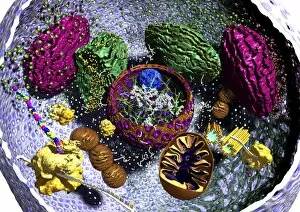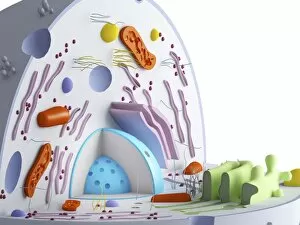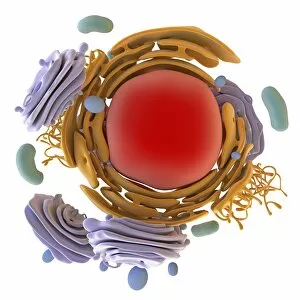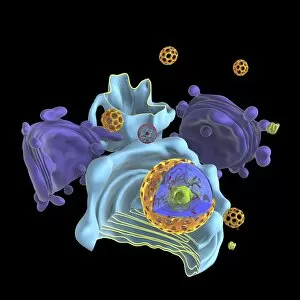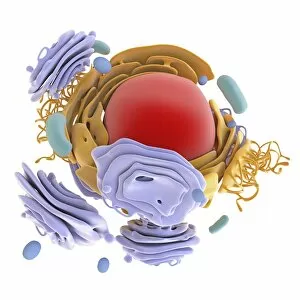Centrioles Collection
Centrioles: The Powerhouses of Cell Division In the intricate model of an animal cell, centrioles stand tall as essential organelles responsible for cell division
All Professionally Made to Order for Quick Shipping
Centrioles: The Powerhouses of Cell Division In the intricate model of an animal cell, centrioles stand tall as essential organelles responsible for cell division. Positioned at the top alongside other vital components such as the nucleus, golgi body, lysosomes, mitochondria, endoplasmic reticulum, ribosomes, cytoplasm, vesicles, thin plasma membrane and microvilli projections; centrioles play a crucial role in ensuring proper cellular replication. Illustrated in meiosis illustration C018/0803 and various artwork pieces (C015/6793, C015/6792, C015/6775, C015/6778, C015/6777, C016/0619, C016/0621, C016/0620, and C016 / 0617), these tiny cylindrical structures possess immense power. During cell division or mitosis process specifically designed to create new cells with identical genetic material; centrioles orchestrate this complex dance flawlessly. Their significance lies in forming spindle fibers that help separate chromosomes during mitosis. Acting like puppeteers pulling strings on marionettes, centrioles ensure each daughter cell receives an equal number of chromosomes from the parent cell. This precise distribution is critical for maintaining genetic integrity and promoting healthy growth. Furthermore, it also contribute to cilia formation - hair-like projections found on certain cells that aid in movement or sensory functions. These versatile organelles exhibit their prowess by organizing microtubules within the cytoplasm and facilitating ciliary motion. Though small in size compared to other organelles within the animal cell model mentioned above; their impact cannot be underestimated and can true powerhouses when it comes to orchestrating successful cellular reproduction and enabling efficient motility through cilia formation. So next time you marvel at the complexity of life's building blocks represented by an animal cell model or admire stunning artwork depicting these organelles, remember the unsung heroes - centrioles.



